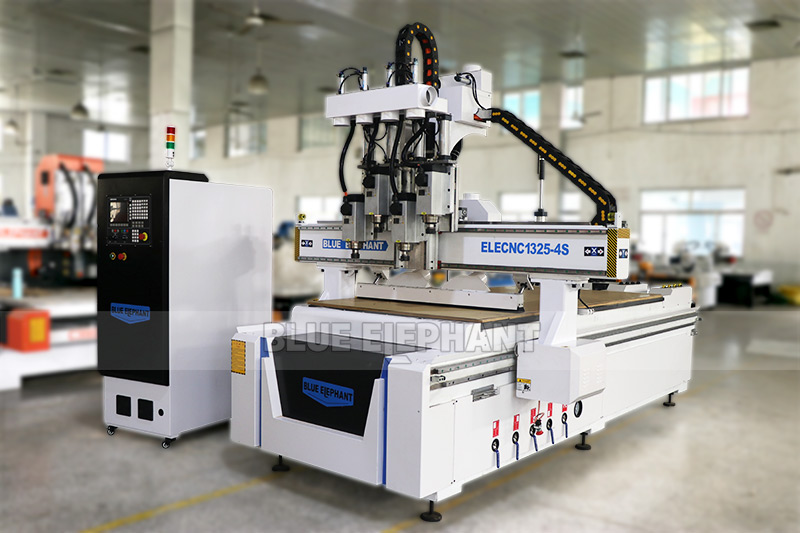With the development of the panel furniture industry, the application of CNC nesting machine has become more and more widespread, and a single manual operation has gradually turned to automated operations. However, an important problem in the processing of CNC blanking machines has always troubled manufacturers and users of CNC nesting machines. During the engraving process, a large amount of dust will be generated. Although most CNC blanking machines are currently equipped with suction Dust device, but it does not fundamentally solve the problem of dust. Blue Elephant analyzes the response to the dust generated by the CNC nesting machine.
When many users use CNC nesting machine, if there is no dust or vacuum, it will bring certain harm to the machine and people. To fundamentally eliminate dust pollution, it is necessary to take a comprehensive management route and start from production. Start with the equipment and choose reasonable CNC opener equipment, supplemented with certain dust and dust removal measures.
However, under current conditions, the most effective measure is to choose dust removal equipment. The choice of dust removal equipment must consider aspects such as the degree of purification required by the operation site and the nature of the dust. Large-scale wood dust and medium-sized wood dust can be collected on-site in time. For the most harmful fine wood dust, the traditional and effective method is to use pneumatic dust collection devices or bag vacuum equipment to collect. If it is not installed, a stand-alone dust collection and dust collection device can be added to the machine tool itself, which can also achieve better results. For safety reasons, operators should wear protective glasses and dust masks to protect the eyes and respiratory organs, especially workers operating on machine tools that produce fine wood dust, should wear large masks to prevent dust damage.
